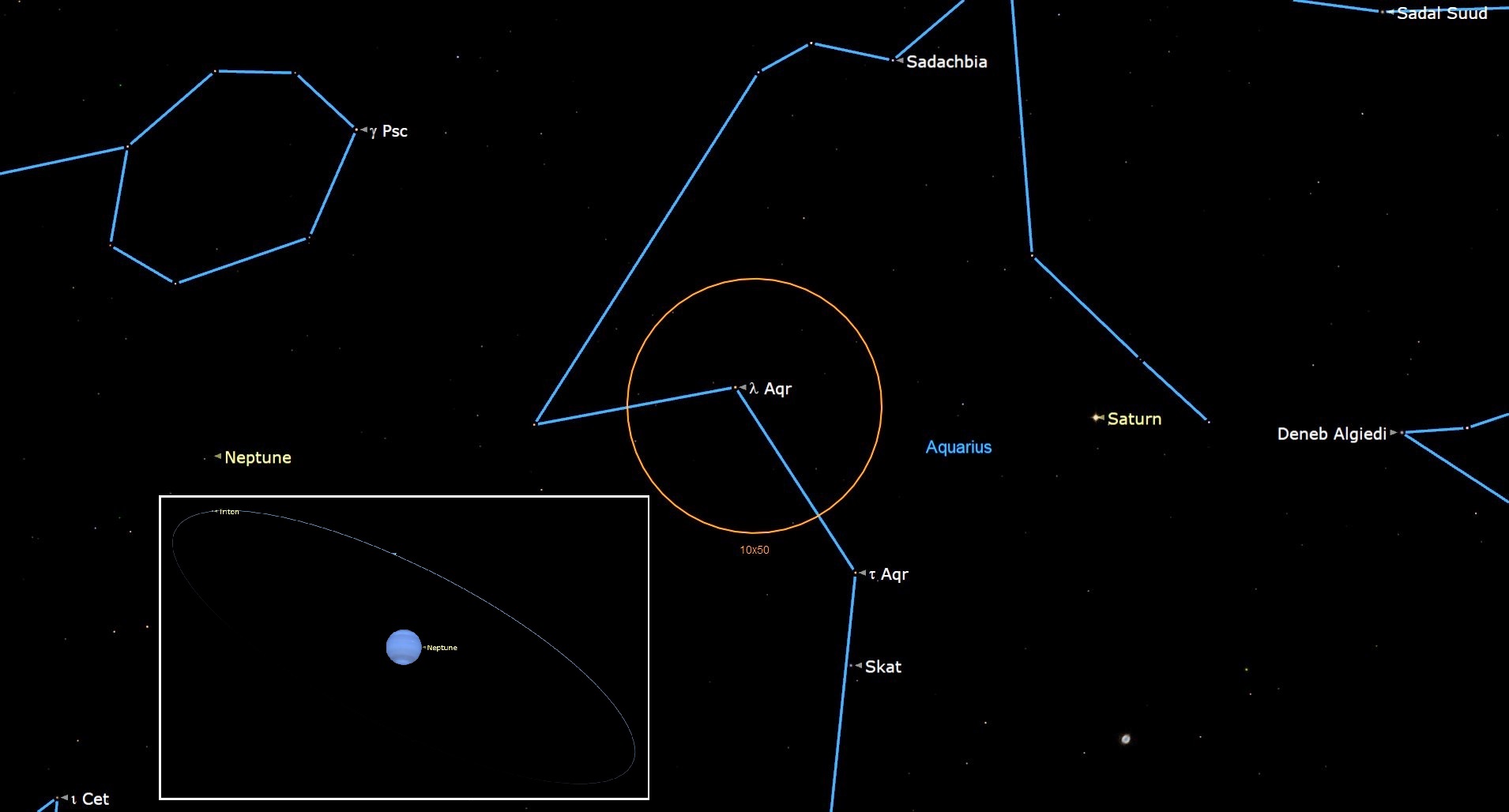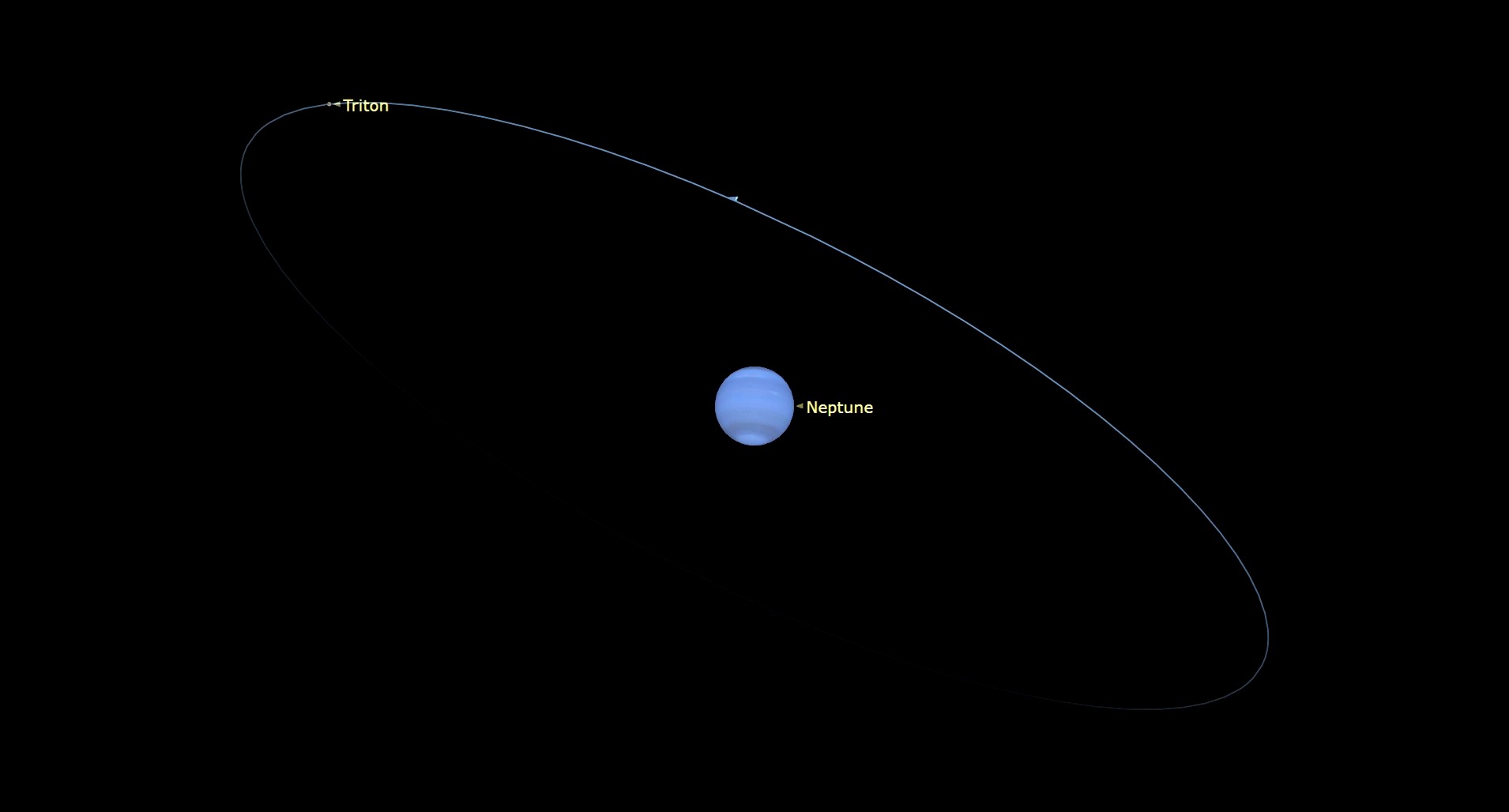See distant Neptune at its brightest in the night sky tonight
The distant planet will be in the constellation Pisces and will be visible for most of the night.

The ice giant Neptune will be at opposition on Tuesday (Sept. 19), meaning it will be in a straight line with our planet and the sun, with Earth in in the center.
The eighth and most distant planet from the sun, Neptune, will also make its closest approach to Earth, known as perigee, at around the same time. This means the distant planet will be at its largest and brightest in the sky tonight, making it an excellent time to locate and observe Neptune.
From New York City, Neptune will rise in the east at around 6:58 p.m. EDT (2258 GMT) and will become visible a few hours later, according to In the Sky. The ice giant will be at its highest point in the sky, 46 degrees above the horizon (nearly five widths of your fist at arm's length), at 12:51 a.m. EDT (0451 GMT) on Wednesday, Sept. 20. Neptune will be in the Pisces constellation.
Neptune will then disappear at around 4:41 a.m. EDT (0841 GMT) when it drops below 21 degrees over the horizon to the southwest. The planet will set at around 6:41 a.m. EDT (1041 GMT).
Related: Night sky, September 2023: What you can see tonight [maps]

Want to see the planets of the solar system in the night sky? We recommend the Celestron Astro Fi 102 as the top pick in our best beginner's telescope guide.
Even though the distant ice giant is at perigee, its closest point to Earth, Earth and Neptune will still be anything but close in real terms. During this closest approach on Tuesday, Neptune will still be around 2.7 billion miles (4.3 billion kilometers) from our planet.
For comparison, Earth and Mars are separated by an average of 140 million miles (225 million kilometers). This means that the average distance between Mars and Earth would fit between Earth and Neptune almost 20 times over.
Get the Space.com Newsletter
Breaking space news, the latest updates on rocket launches, skywatching events and more!
And while the Earth is around 93 million miles (150 million kilometers) from the sun, Neptune is around 30 times further away at around 2.8 billion miles (4.5 billion kilometers) from our solar system's star. The distance between Neptune and the sun means that the ice giant takes 165 Earth years to orbit the sun.

The distance between Earth and Neptune means that the blue marble-like world isn't visible in the sky over Earth with the naked eye. This is despite the fact that the planet has a width of around 31,000 miles (50,000 kilometers), around 4 times the size of Earth, and is the fourth largest planet in the solar system.
The ice giant at the outskirts of the solar system is visible with the aid of a telescope or good binoculars in dark skies and in favorable weather conditions. Want to check out Neptune in the night sky? See our guides on the best telescopes, the best binoculars, and the best telescopes for seeing planets.
And if you're looking to snap photos of Neptune or the night sky in general, check out our guide on how to photograph the planets, as well as our best cameras for astrophotography and best lenses for astrophotography.
Editor's Note: If you snap an image of Neptune at opposition and would like to share it with Space.com’s readers, send your photo(s), comments, and your name and location to spacephotos@space.com.
Join our Space Forums to keep talking space on the latest missions, night sky and more! And if you have a news tip, correction or comment, let us know at: community@space.com.

Robert Lea is a science journalist in the U.K. whose articles have been published in Physics World, New Scientist, Astronomy Magazine, All About Space, Newsweek and ZME Science. He also writes about science communication for Elsevier and the European Journal of Physics. Rob holds a bachelor of science degree in physics and astronomy from the U.K.’s Open University. Follow him on Twitter @sciencef1rst.









